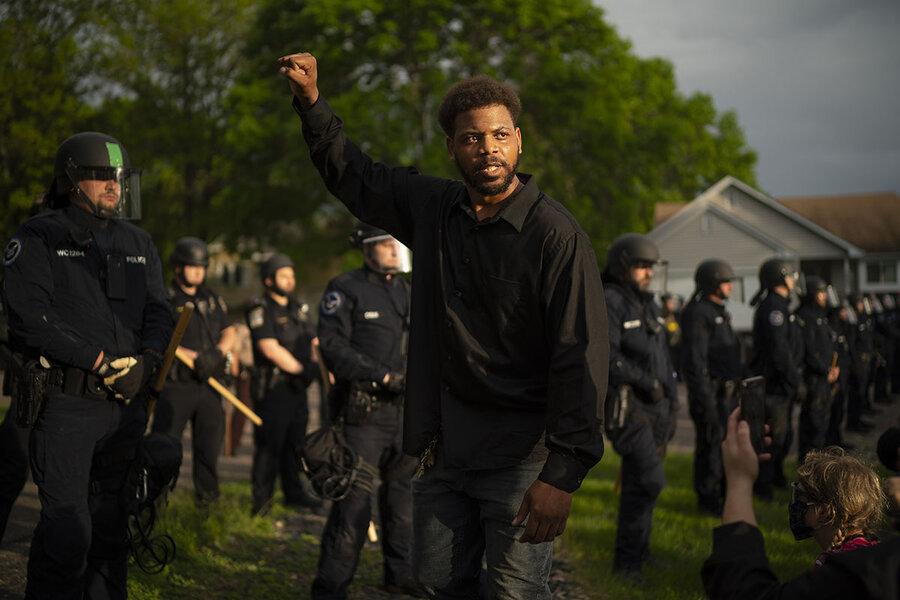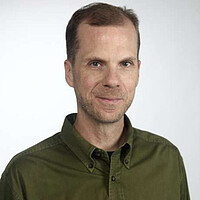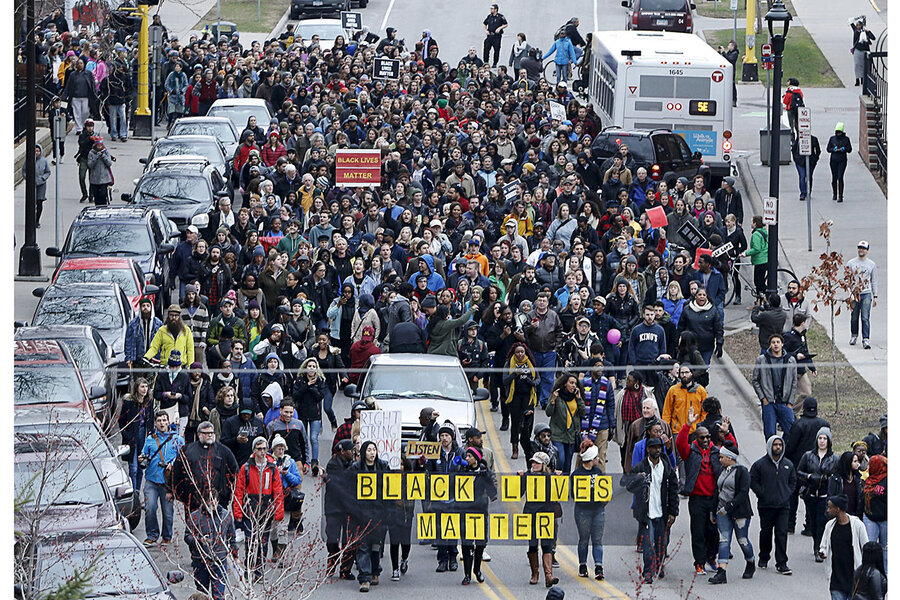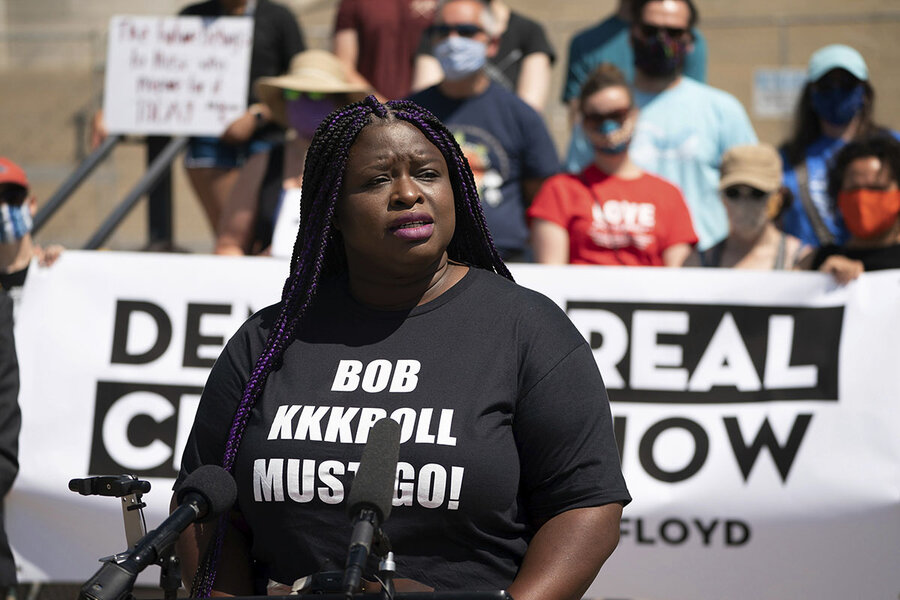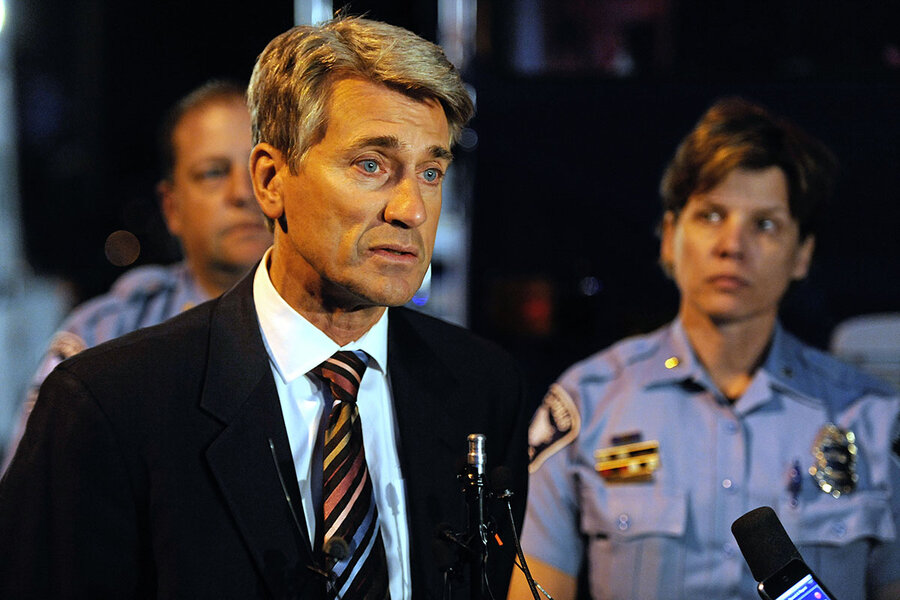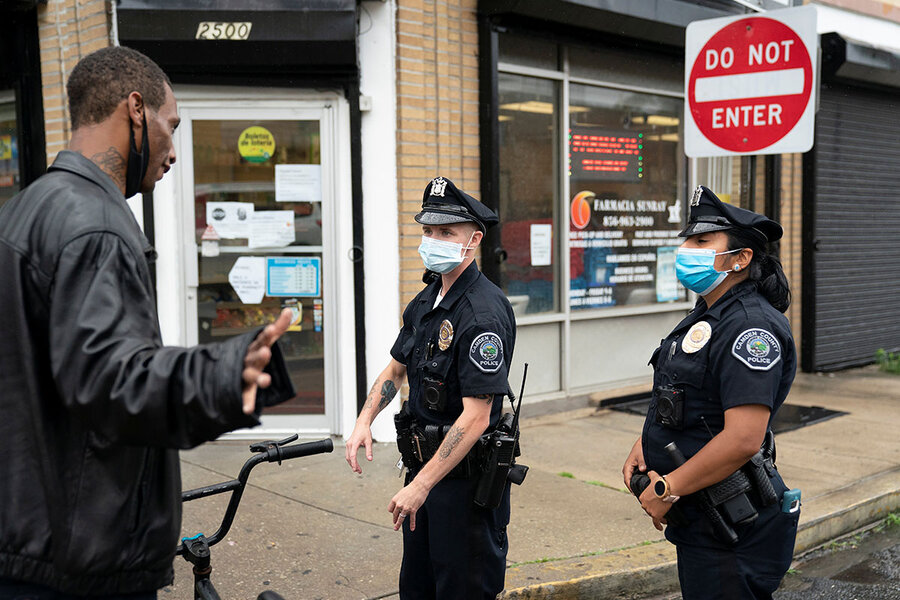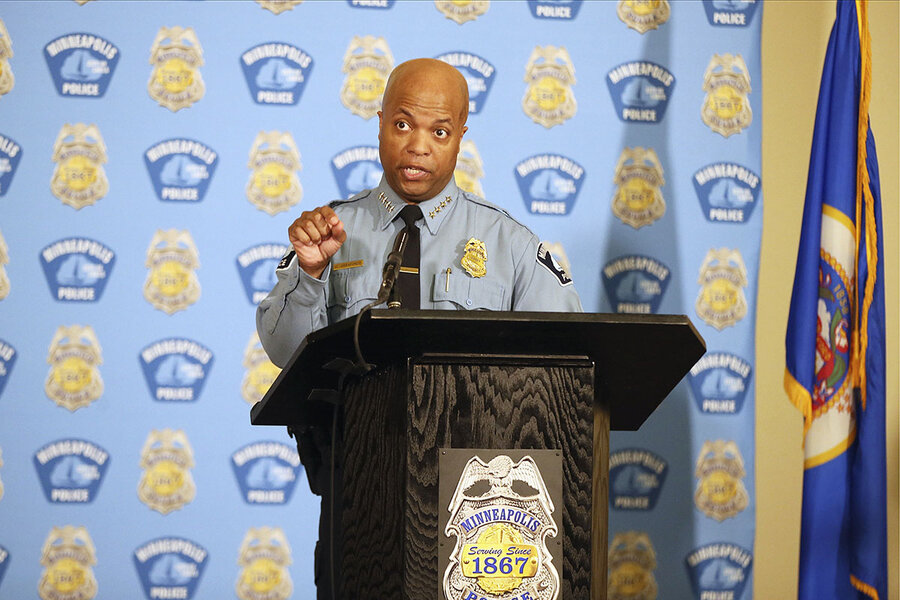‘It’s way past time to try something new’: The push to defund police
Loading...
| Minneapolis
“Defund the police,” if an imprecise slogan, has provided a North Star for a grassroots movement unlike any to convulse the country in almost half a century. The phrase broadly refers to a desire among advocates to reimagine public safety strategies using racial equity as a guiding principle. And it seeks to redirect funding from police to crisis responders and social services tailored to community needs.
Among those drawing attention to police budgets is Nekima Levy Armstrong, a civil rights attorney and former president of the Minneapolis NAACP chapter. The $193 million allocated for Minneapolis’ 850-member force this year accounts for 36% of the city’s general fund.
Why We Wrote This
Every police brutality case comes with calls for reform: better training, more civilian review boards, greater diversity on the beat. Now comes the defund movement, which is more basic. It looks at the very role of police in society.
“Our city leaders have seen the inequities in Minneapolis. But it took the death of George Floyd for them to show any political will,” she says.
For James Densley, a professor of criminal justice at Metropolitan State University in St. Paul, the George Floyd case illuminates the need to reinvent policing after decades of incremental reforms and halting progress.
“We have to be big and bold,” he says. “We have to do something different if we’re going to transform communities that have been harmed by police and the wider culture for so long.”
The outrage that detonated in Minnesota’s largest city after police killed George Floyd had a fuse five years long.
In 2015, a white Minneapolis police officer fatally shot an unarmed man named Jamar Clark, provoking protests that drew hundreds of people. Activists with Black Lives Matter and other groups camped out in front of a police precinct for more than two weeks before officers evicted them and tore down their tents.
“His death was an awakening for a lot of us,” says Mike Griffin, a senior organizer with Community Change Action, a national advocacy group. He recalled activists with bullhorns beckoning to passersby to join the cause. Others toted clipboards to sign people up for action alerts. “We were learning as we went, getting an understanding of how to bring people into the movement.”
Why We Wrote This
Every police brutality case comes with calls for reform: better training, more civilian review boards, greater diversity on the beat. Now comes the defund movement, which is more basic. It looks at the very role of police in society.
The death of Mr. Clark, who was Black, elevated long-running tensions between people of color and the city’s mostly white police department. Organizers pushed for abolishing the force, and in 2016, their demands grew louder – and demonstrations grew larger – after an officer in a St. Paul suburb shot and killed Philando Castile.
Four years later, when video emerged of Officer Derek Chauvin kneeling on Mr. Floyd’s neck as his life drained out of him on Memorial Day, activists required neither bullhorns nor action alerts to rally the masses. People poured into the streets as thousands of new voices amplified the call to dismantle the department.
“We’re done talking about reform,” Mr. Griffin says. “We want to transform the police state into a caring state that understands communities of color.”
The rising chorus to defund the police has resonated across the country since Mr. Floyd’s death even as much remains unclear about the crusade’s intent and about the proposals percolating in Minneapolis and other cities.
“Defund the police,” if an imprecise slogan, has provided a North Star for a grassroots movement unlike any to convulse the country in almost half a century. The phrase broadly refers to a desire among advocates to reimagine public safety strategies using racial equity as a guiding principle, and seeking to redirect funding from police to crisis responders and social services tailored to community needs.
The clamor to abolish the police – a concept that triggers confusion and questions, scorn and skepticism – has inflamed a conversation about policing and people of color that has roared upward from the streets to city hall, from statehouses to Congress. The campaign has spurred officials in New York, Los Angeles, Dallas, Seattle, and elsewhere to weigh cutting police budgets and investing more in health, education, housing, and employment programs. Atlanta Mayor Keisha Lance Bottoms vowed similar action following the fatal shooting of Rayshard Brooks by a white officer less three weeks after Mr. Floyd gasped “I can’t breathe” in his final moments.
The upheaval arrives nearly 30 years after the beating of Black motorist Rodney King by white Los Angeles cops, whose subsequent acquittals on charges of excessive force ignited days of rioting in the city. The case’s notoriety intensified scrutiny of police as cities formed civilian review boards to investigate use of force complaints and the Department of Justice began to impose oversight on police departments with patterns of abuse.
A bystander’s video of the beating laid bare the reality of police violence for a national audience, and in the intervening decades, law enforcement has enacted a litany of reforms to remedy the problem. A partial list includes community policing, de-escalation and implicit bias training, body cameras, diversity hiring, and requirements for cops to live in the cities they patrol.
The efforts have failed to curb overall rates of excessive force, according to the U.S. Commission on Civil Rights, with people of color among those facing the greatest risk.
Minneapolis officials intend to explore more dramatic changes. The City Council unanimously passed a resolution June 12 to initiate a yearlong process to “create a transformative new model for cultivating safety,” days after a veto-proof majority of the council pledged to replace the Police Department.
The arrest rate of Black residents in the city runs almost nine times above that of white residents for low-level offenses, and officers are seven times more likely to use force against Black people. Police detained Mr. Floyd after receiving a complaint that he had attempted to pass a fake $20 bill at a corner market. Outside the store, Mr. Chauvin pinned his neck to the pavement for nearly nine minutes as two other officers held him down and another stood watch. The department fired the four cops, who await trial on criminal charges.
For James Densley, a professor of criminal justice at Metropolitan State University in St. Paul, the case illuminates the need to reinvent policing after decades of incremental reforms and halting progress.
“We have to be big and bold,” he says. “We have to do something different if we’re going to transform communities that have been harmed by police and the wider culture for so long.”
“The time is now”
Some 500 people filled a plaza near Minneapolis City Hall on a recent afternoon to protest police violence and racial inequality. They heard from family members of victims of police shootings, who spoke of lasting anguish and fury, and from activists, who urged the crowd to stay indignant and engaged in the months ahead.
Nekima Levy Armstrong, a civil rights attorney and former president of the local NAACP chapter, elicited the loudest cheers. Pointing at the soaring, rose-granite building across the street, she shouted, “We’re tired of those people at City Hall making six-figure salaries and not doing a thing to change anything!”
Ms. Levy Armstrong took part in the 18-day occupation outside the police precinct after Mr. Clark’s death in 2015. The experience deepened her devotion to public safety reform. Talking after the City Hall rally, she criticized what she considers a lack of urgency from the City Council and Mayor Jacob Frey, who absorbed withering derision at another protest when he refused to commit to abolishing the police.
“Our city leaders have seen the inequities in Minneapolis. But it took the death of George Floyd for them to show any political will,” she says, echoing other prominent local activists, who have skewered a council regarded as among the country’s most progressive. The words on her T-shirt – “The Time Is Now!” – mirrored her convictions. “Their actions at this point feel like too little, too late.”
Ms. Levy Armstrong and other organizers draw attention to the city’s police budget as they press for increased resources for social services. The $193 million allocated for the 850-member force this year accounts for 36% of the city’s general fund and amounts to twice the combined budget for more than a dozen community programs, including affordable housing, race equity, and violence prevention.
Advocates want to reduce dependence on a public safety system focused on armed officers. MPD150, a grassroots coalition that favors abolishing the department, describes the effort as “a gradual process” that funnels “resources, funding, and responsibility away from police and toward community-based models of safety, support, and prevention.”
The approach could involve diverting noncriminal emergency calls to first responders, ranging from social workers, drug counselors, and youth advisers to paramedics, victim advocates, and homeless assistance providers. The strategy would free cops from acting as a Swiss Army knife, easing the expectation to shoulder what a former Dallas police chief once labeled “every societal failure” by removing them from situations that fall outside their core training.
“There are so many calls where the person responding shouldn’t have a gun,” says Mr. Densley, co-founder of The Violence Project, a research think tank. The idea to “unbundle” policing – to allow officers to shed some of their duties – has begun to gain notice as an alternative to or explanation of “defund the police.” “Asking cops to hold so many roles is almost impossible. So creating a degree of specificity could actually help them.”
A plan announced by San Francisco officials for unarmed crisis responders to start handling mental health and other noncriminal emergencies mirrors a long-standing program in Eugene, Oregon. A version of that model debuted last year in Austin, Texas, where 911 dispatchers ask callers if they need police, fire, or mental health services. Police departments in Houston, Los Angeles, Seattle, and several other cities pair officers with mental health workers on crisis calls.
“It’s way past time to try something new,” Mr. Griffin says. “Cops are getting de-escalation training, implicit bias training, bodycams – it hasn’t worked.” The white officer who shot and killed Mr. Brooks in Atlanta attended a de-escalation course earlier this year, and nationwide, police are three times more likely to kill Black people than white people. “Cops are responding to every single problem – homeless people, domestic situations, mental health crises – and too often they’re responding with force,” Mr. Griffin says. “And too many people of color are dying.”
“Rightful rage”
R.T. Rybak watched with grief and guilt as Minneapolis burned in the aftermath of Mr. Floyd’s death. The former three-term mayor sought to improve the city’s police culture and strengthen the department’s ties with the community during his 12-year reign that ended in 2014. He has offered candid mea culpas for falling short.
“I did what I could to move the ball a little farther down the field, but it wasn’t enough,” says Mr. Rybak, now the chief executive officer and president of the Minneapolis Foundation. “And I felt crushed that after what we tried to do, a man was killed by a cop in uniform.”
The protests exposed the divide between the department and the community. Mr. Rybak faults the militarized mindset of cops in the post-9/11 era – exemplified by the harsh treatment of peaceful marchers – and the police union’s resistance to change. In one policy skirmish, after Mayor Frey banned “warrior-style” training for police last year, Bob Kroll, the union’s powerful and controversial president, continued to make the course available to officers.
In a letter to members, Mr. Kroll, who has refrained from public comment on Mr. Floyd, vowed to fight for the jobs of the four officers fired in connection with his death and likened protesters to a “terrorist movement.”
Former Minneapolis police Chief Janeé Harteau rebuked him on Twitter, branding the union chief a “disgrace to the badge” and calling for him to resign. Ms. Harteau clashed with Mr. Kroll during her five-year tenure, and she contends that the union’s shielding of violent cops and the lack of disciplinary action taken against them has corroded the department’s image.
The city agency that investigates police misconduct has received more than 2,600 complaints against officers since 2012. A dozen resulted in discipline. Mr. Chauvin escaped penalty in 16 of the 17 complaints he faced during 19 years on the force; the other yielded two letters of reprimand.
Ms. Harteau invited U.S. Justice Department officials to review the police force in 2014 as she attempted to bolster its internal oversight, and defying the union’s objections, she launched the department’s implicit bias training and bodycam programs. She resigned in 2017 after a Black officer fatally shot a white Australian American woman.
The city’s first female police chief, Ms. Harteau views the rousing, rancorous debate on law enforcement as long overdue. She emphasizes the need for cops to reconnect with the community, and she agrees with departments dispatching social workers and mental health counselors on crisis calls in limited circumstances.
But the killing of Mr. Floyd has reaffirmed her view that slashing the police budget will inflict more harm by siphoning away resources for recruiting, training, and accountability initiatives. “Most police departments are already grossly underfunded,” she says, “and defunding will only further impede police reform.”
A recent Quinnipiac poll of registered voters showed that more than three-fourths of respondents approve of the police in their community and two-thirds support the protests against police violence. The findings suggest a preference for rehabbing rather than dismantling departments.
“There is rightful rage in the community and an understandable impatience for reform,” Mr. Rybak says. “But there should be an understanding that some of these things are going to take time.”
Several states and cities have responded to the nationwide protests with new policing policies that ban chokeholds and no-knock warrants, increase penalties for officer misconduct, and enhance transparency in disciplinary cases. Minneapolis officials negotiated an agreement with the state that bans chokeholds and fortifies a rule that officers must intervene when colleagues apply excessive force.
Mr. Densley deems the measures necessary. He also doubts whether such small-step reforms can mend the breach between police and people of color any more than the department’s recent participation in a federal program known as the National Initiative for Building Community Trust and Justice.
“The police department has completely lost all public trust,” he says. “I don’t think you could ever wear the same uniform and badge and create trust in the community again.”
The bully pulpit
Public criticism and internal turmoil engulfed the police force of Camden, New Jersey, eight years ago. Mired in contract negotiations with the officers union, and with the department’s reputation in free-fall amid a spike in homicides and excessive force complaints, Scott Thomson, then the police chief, devised a plan to lay off the entire force.
Given the mayor’s blessing, he reassembled the department under the county’s aegis, requiring every officer to reapply. The move enabled him to reshape the agency’s culture. He weeded out disgruntled cops and reseeded the ranks with men and women he considered better suited to the role of guardian than warrior, who avoided turning to force as a first resort.
The department and its relationship with the community healed in the ensuing years. Officer morale climbed as homicides fell by two-thirds and excessive force complaints plunged by 95%. Former President Barack Obama praised the force as a “symbol of promise.”
“To pull that off you need an exceptional leader with a backbone of steel,” says Chuck Wexler, who leads the Police Executive Research Forum, a policy and training organization in Washington that teaches de-escalation tactics. He worked with Mr. Thomson and the revitalized Camden force, and he asserts that if the Minneapolis department chooses “the nuclear option” – dismantling the police force – Chief Medaria Arradondo possesses the qualities and the platform to guide the department through the fallout.
“He has the bully pulpit,” Mr. Wexler says. “He has a national audience to say, ‘We have to change the model.’”
Chief Arradondo, a Minneapolis native, joined four fellow Black officers in suing the department in 2007 for discrimination. The first African American chief in the agency’s history, he has earned respect from residents, activists, and city officials for his swift firing of the four officers who detained Mr. Floyd and for his public apology for their actions.
He has withdrawn the department from contract talks with the officers union, perhaps seeking to extricate the agency from the union’s influence as he attempts to enhance accountability and transparency. “What our city needs now more than ever,” he told reporters in announcing his decision, “is a pathway and a plan that provides hope, reassurance, and actionable measures of reform.”
In Minneapolis and many other cities, police union contracts prevent departments from including misconduct complaints in an officer’s personnel file unless the allegations result in discipline. At the same time, the federal doctrine of qualified immunity offers almost airtight protection from civil liability for officers accused of excessive force. The dual effect preserves a public safety model at once adversarial and opaque.
“It’s always hard to change police culture,” says Jesse Jannetta, a senior policy fellow with the Urban Institute in Washington. He spent time with the Minneapolis department as a researcher involved in the Justice Department’s national initiative for building community trust. “But it’s even harder if your people are doing things they’re not supposed to be doing and there are no consequences,” he says.
The Trump administration has curtailed consent decrees that established temporary federal oversight of troubled police departments in Baltimore, New Orleans, and other cities during the past quarter-century. The agreements enable the Justice Department to investigate complaints of unlawful behavior – excessive force, racism, corruption – and shepherd agencies toward solutions.
The Minneapolis force would appear ripe for assistance. Yet Ms. Levy Armstrong, who has voiced public support for Chief Arradondo, remains unconvinced that a healthy culture can take root within the besieged department. She blames city officials for failing to pursue deeper reforms before Mr. Floyd encountered Mr. Chauvin on Memorial Day.
“They think appointing a Black chief is enough,” she says. “That’s barely a start.”
Redefining the social contract
Black and white residents in Minneapolis live in parallel worlds, separated by vast disparities in income, housing, health, and education. In a city where whites make up 60% of the population, de facto segregation persists, the legacy of racial property covenants and later discriminatory housing policies.
The movement to defund the police is freighted with the city’s chronic inequality. Brett Grant, director of research and policy for Voices for Racial Justice, a Minneapolis nonprofit, explains that the campaign represents nothing less than a chance to redefine the social contract.
“We can’t just focus on the police if we’re talking about addressing systemic oppression and historical racism,” he says. “We have to talk about inequities across society. We need to connect the dots.”
The conversation has begun in earnest for what might be the first time in Minneapolis. The school district and the University of Minnesota, along with the parks department and a growing list of civic and cultural institutions, have severed ties with the police department. Meanwhile, at protests throughout the city, large numbers of white people show solidarity with the cause, giving Mr. Grant a sense of cautious optimism that springs from sorrow.
“It’s a tragedy that it takes a killing like this for people to feel like now there’s an awakening,” he says. “A lot of communities of color feel like our voices aren’t heard. White people and white communities are finally waking up.”
For his colleague Mónica Hurtado, a racial justice and health equity organizer, the moment feels electric with potential. She sees a city and a nation drawn toward an unexpected future, swept into a historical uprising for equality.
“It’s what we make of it. It’s an opportunity coming from a crisis when emotions are high,” she says. “It will take everybody working together. It will take hope.”




